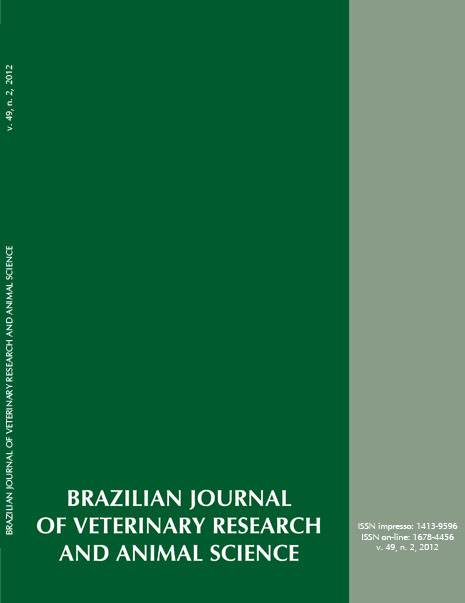Significant hematocrit decrease in healthy horses during clinical anesthesia
DOI:
https://doi.org/10.11606/issn.2318-3659.v49i2p139-145Keywords:
Horse, Hematocrit, Packed cell volume, Xylazine, AcepromazineAbstract
Xylazine (XYL) and acepromazine (ACP) are known to decrease the hematocrit (HT) of horses when administered alone. However in routine anesthesia these drugs are administered by associations which ultimate effect in the HT is unknown but may cause false impressions about the hydration status, blood loss and red blood cell indices. The objective of this study was to characterize the values of HT in horses anesthetized with XYL, ACP, ketamine, midazolam, guaiphenesin, isoflurane and ephedrine. Twenty healthy horses were premedicated with either XYL 0.8 mg/kg (XYL group, n=10) or XYL 0.5 mg/kg plus ACP 0.05 mg/kg (XYL+ACP group, n=10). Anesthesia was induced with ketamine, midazolam and guaiphenesin and maintained with isoflurane. Ephedrine was infused for cardiovascular support. HT, vital parameters and blood gas values were evaluated at baseline, between each drug administration, after standing and 24 hours after baseline (24hBL). The HT started to decrease 17 and 40 minutes after premedication in XYL group and XYL+ACP group, respectively (p<0.05). The maximum decrease of 19% in XYL group and 17% in XYL+ACP group was observed after 1 hour of premedication (p<0.05). In both groups HT remained low for longer than 180 minutes and returned to baseline at 24hBL. A significant HT decrease should be considered in anesthetized healthy horses receiving XYL, ACP, ketamine, midazolam, guaiphenesin, isoflurane and ephedrine.Downloads
Downloads
Published
2012-04-03
Issue
Section
UNDEFINIED
License
The journal content is authorized under the Creative Commons BY-NC-SA license (summary of the license: https://
How to Cite
1.
Ambrósio AM, Ida KK, Souto MT de MR, Silva LCLC da, Soares PB, Ibiapina BT, et al. Significant hematocrit decrease in healthy horses during clinical anesthesia. Braz. J. Vet. Res. Anim. Sci. [Internet]. 2012 Apr. 3 [cited 2025 Apr. 5];49(2):139-45. Available from: https://revistas.usp.br/bjvras/article/view/40270





